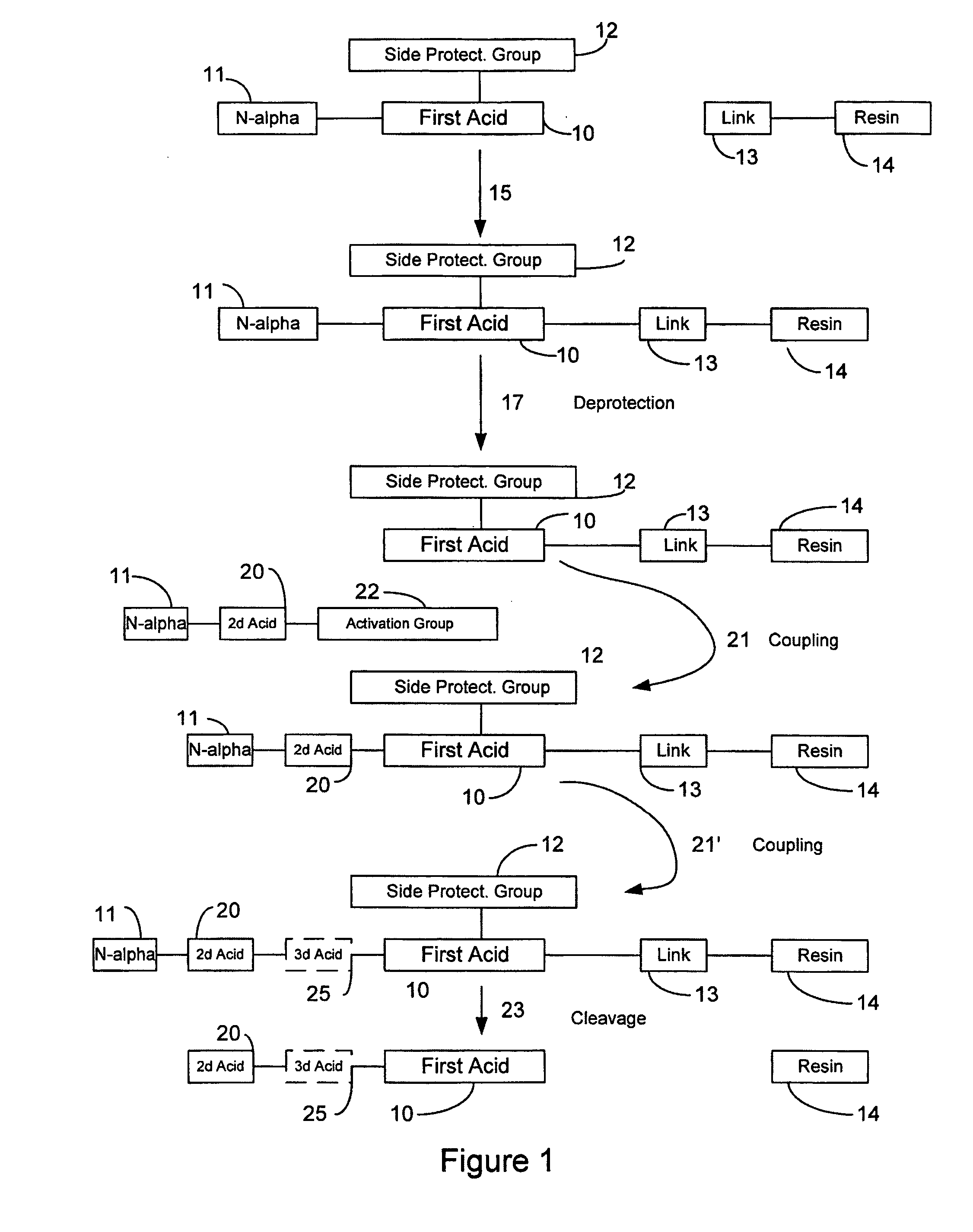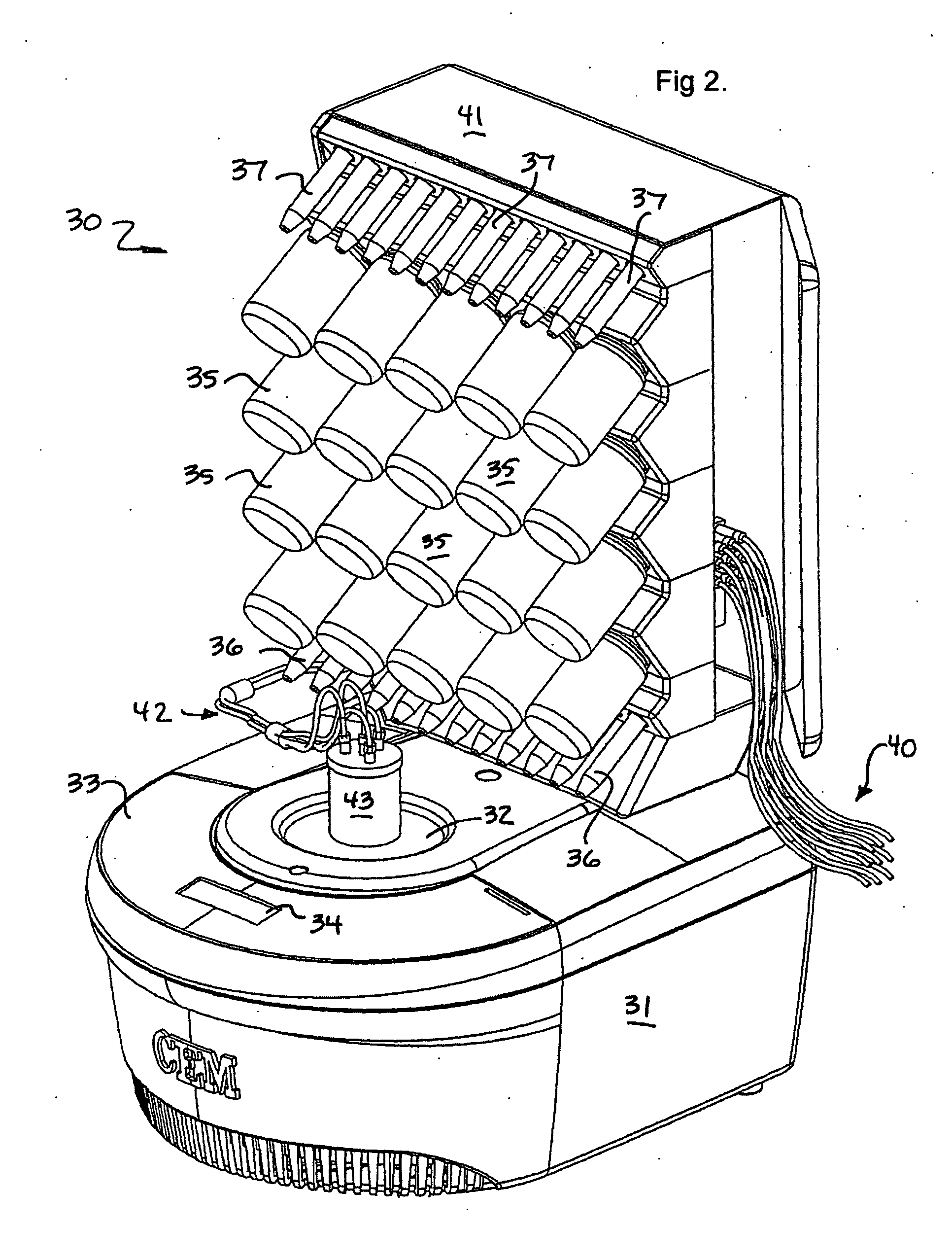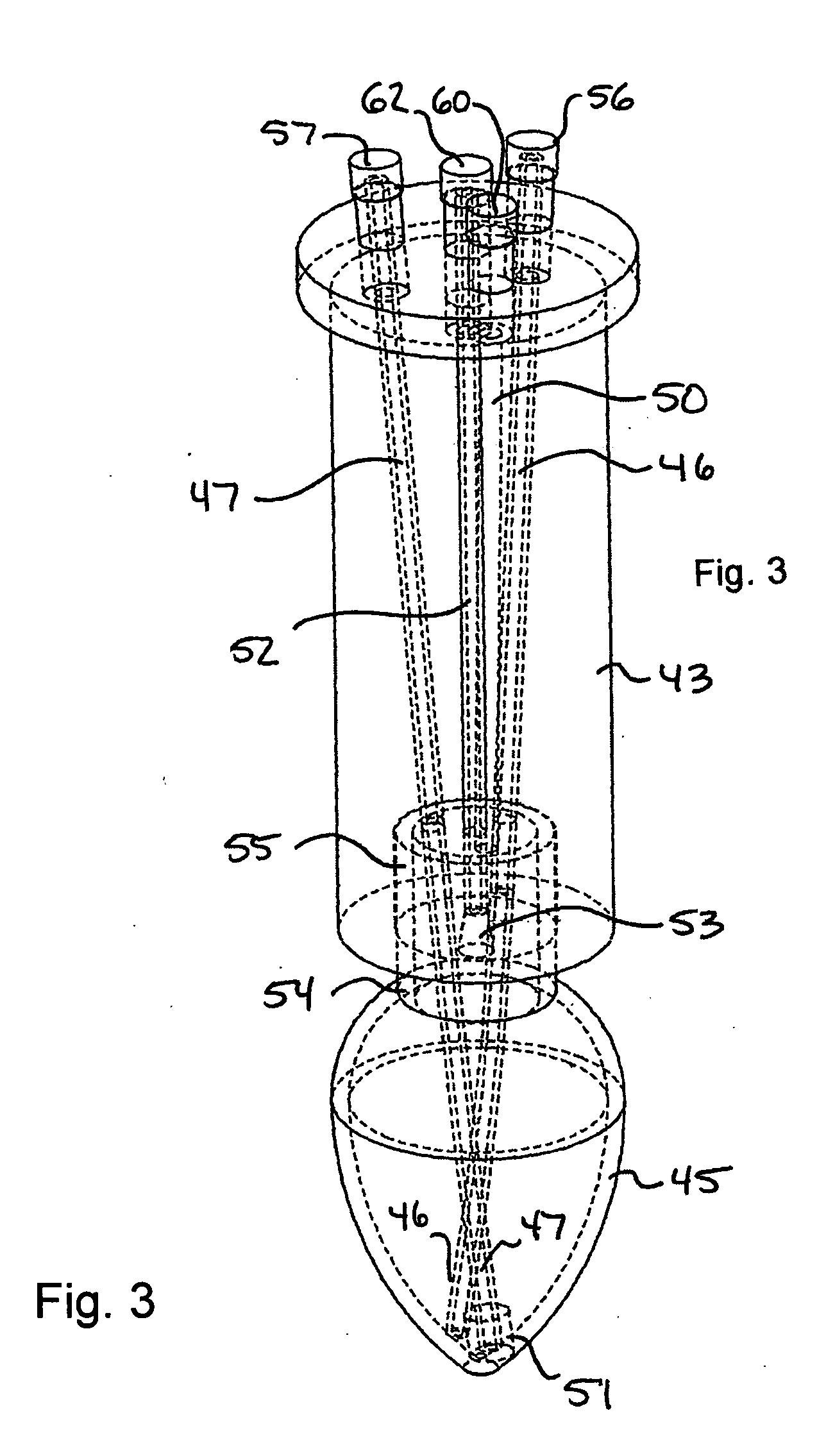Microwave-assisted peptide synthesis
a microwave-assisted, peptide technology, applied in the direction of peptides, synthetic resin layered products, energy-based chemical/physical/physical-chemical processes, etc., can solve the problems of low product yield, and affecting the synthesis efficiency of peptides
- Summary
- Abstract
- Description
- Claims
- Application Information
AI Technical Summary
Benefits of technology
Problems solved by technology
Method used
Image
Examples
Embodiment Construction
[0030] The invention is an apparatus and method for the solid phase synthesis of one or more peptides, specifically utilizing microwave energy to accelerate the method.
[0031]FIG. 1 is a schematic diagram illustrating some aspects of the solid phase peptide synthesis process. It will be understood that FIG. 1 is general in nature and is not limiting of the invention. FIG. 1 illustrates a first amino acid 10 that includes an N-alpha protective group 11 and a side chain protective group 12 attached to it. A linking molecule 13 is attached to a resin support 14. In a first step designated by the arrow 15, the first acid and its protective groups 111 and 12 are attached to the linker 13 and the resin support 14. In a second step indicated by the arrow 17, the N-alpha protective group is removed (“deprotected”) to produce the structure in which the first acid 10 and its side chain-protecting group 12 are linked to the support 14 through the linker molecule 13. In the next step, indicated...
PUM
| Property | Measurement | Unit |
|---|---|---|
| Transparency | aaaaa | aaaaa |
| Frequency | aaaaa | aaaaa |
Abstract
Description
Claims
Application Information
 Login to View More
Login to View More - R&D
- Intellectual Property
- Life Sciences
- Materials
- Tech Scout
- Unparalleled Data Quality
- Higher Quality Content
- 60% Fewer Hallucinations
Browse by: Latest US Patents, China's latest patents, Technical Efficacy Thesaurus, Application Domain, Technology Topic, Popular Technical Reports.
© 2025 PatSnap. All rights reserved.Legal|Privacy policy|Modern Slavery Act Transparency Statement|Sitemap|About US| Contact US: help@patsnap.com



